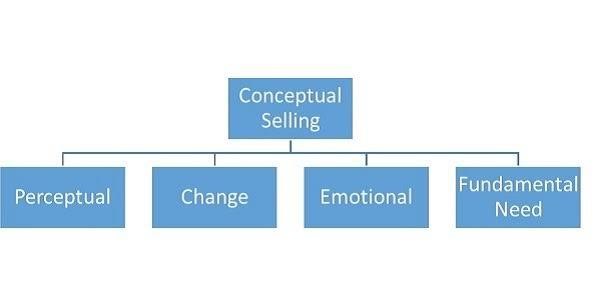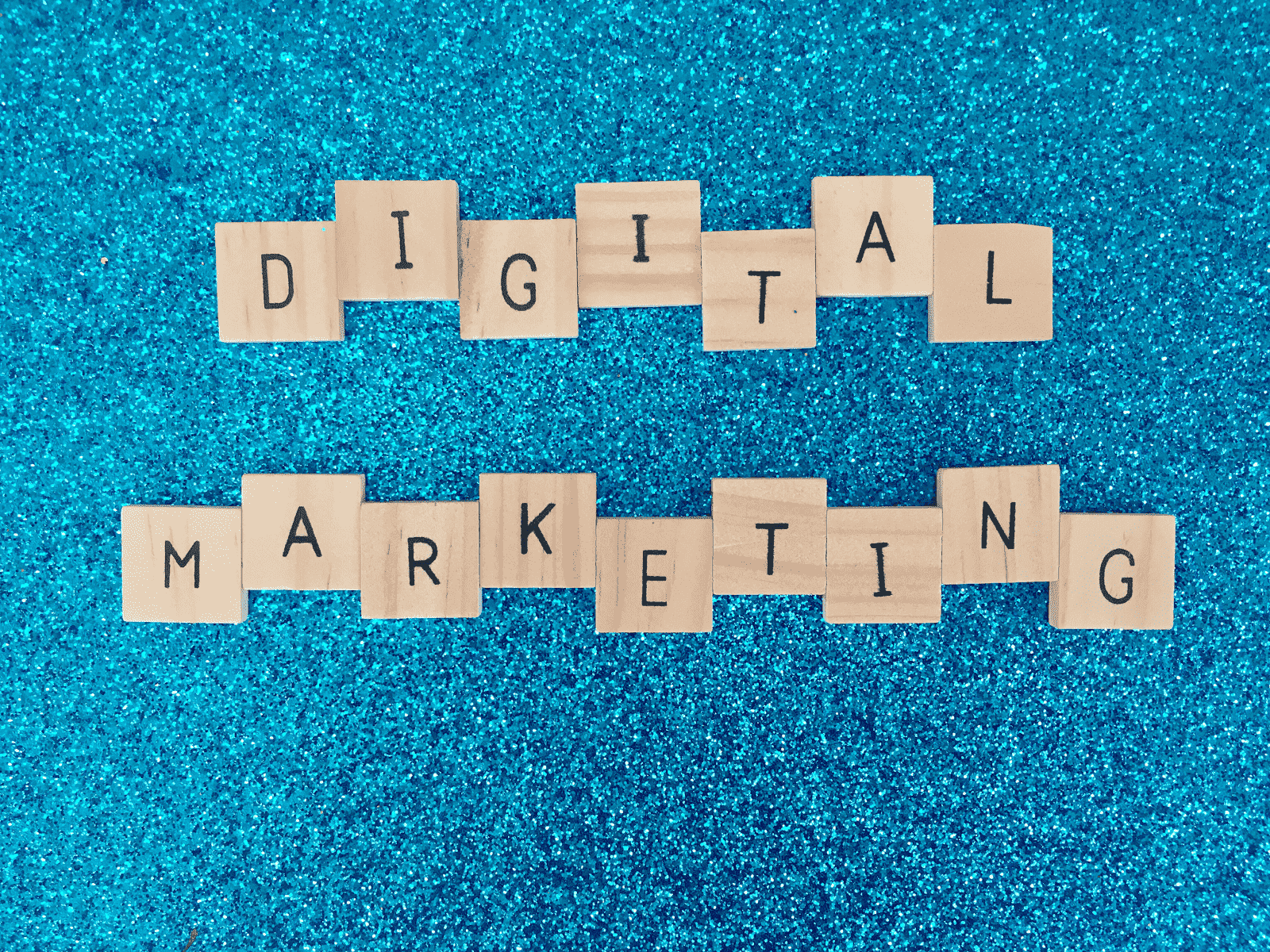Have you watched a top IMDB-rated film called ‘Pulp Fiction’? In the film, you can see two characters, Jules Winnfield and Vincent Vega, trying to retrieve a briefcase. While we as an audience never get to see what’s inside of it, we are told it is of utmost importance. In film terms, it is what is called a MacGuffin. It can be defined as an event, device, or object that is pivotal to the film’s plot and character’s motive but does not carry much value in itself. Simply put, the concept holds more value than the object itself. Regardless of what was inside that briefcase, what was important was that people desired it. That’s what conceptual selling is all about!
You will make a product kind of MacGuffin, so when you pitch it to your audience, you will be focused on the concept around the product instead of the product itself. Thus, your Growth Marketing Agency will devise an advertising plan where you describe why it is crucial and why it is desirable without actually explaining the fundamentals of the product.
Let’s understand the concept of conceptual selling in detail:
What is Conceptual Selling?

Your Growth Marketing Agency cannot execute or organize a sales process without following a proper sales methodology. Every sales cycle must follow a specific logic, without which it is doomed from the start. Conceptual selling is one such methodology that is popularly used for executing and planning customer interactions.
It ensures that you, as a business, follow a customer-oriented approach and come in line with sales activities with the customer’s decision-making process.
The fundamental rule about this methodology is:
Customers don’t purchase a particular service or product- instead, they purchase the concept that the solution is based on.
Authors Robert Miller and Stephen Heiman urged sales reps to uncover the potential customer’s concept of their service/product, recognize their decision-making process and not begin with a pitch.
Named after the authors, the Sales Concept is also popularly recognized as the Miller-Heiman Selling Concept. According to the authors, sales reps must ask questions that fall into five broad categories. They are:ps must ask questions that fall into five broad categories. They are:
- Confirmation questions that will help in reaffirming details of which they are already aware.
- New information questions that will clarify the prospect’s concept of the service or product and explore what they would like to achieve.
- Attitude questions that decrypt buyer persona and try to find their link to the brand’s project.
- Commitment questions that ask about a potential customer’s level of investment in the project.
- Basic issue questions that raise potential issues with a prospect’s use of the product.
Conceptual selling depends on listening and then categorizing the selling process into 3 different phases. They are:
- Extraction of details: This step records potential customers’ attributes and attitudes. The goal is to understand how likely they are to purchase a product.
- Supplying details: This process involves relaying the extracted information to the sales team. The aim is to create a roadmap to a sale.
- Earning commitment: The final step that converts a prospect into a lead and a lead into a customer.
A salesperson should ensure that both parties buy into a conceptual sale. This means that every transaction must be a win-win situation. If the sales strategy fails to achieve a mutually beneficial situation, it lacks a clear sales concept.
Imagine trying to sell a pen to an author who prefers a typewriter. Your solution – a better pen – does not solve their problems! The only way to get to such a prospect is to convince them that writing will improve their memory of their novel’s plot or to develop a better ink for their typewriter.
That is precisely what conceptual selling urges you to do. Avoid a problem-solution mismatch by confining pitches to appropriate prospects. Alternatively, incorporate user profiles into the product ideation process to develop creative solutions catering to important market segments.
The concept of conceptual selling was developed after the Great Depression. During this period, in the late 1920s and early 1930s, supply chains were rusty. As the beginning of the depression’s end neared, companies with abundant products had to move their inventories. In order to increase sales, they came up with conceptual selling—the goal was to move inventory not by pitching the product but the idea of the product. However, today’s concept has evolved somewhat from how it began.
Today, the concept assumes that the customer will purchase a service or product without regret, or even if they do, they won’t feel that for long and will buy the same product again soon.
Unlike the marketing concept, the selling concept seeks to address consumer needs. It seeks out prospects and sells the benefits of the products rather than the product itself. Although marketing concepts are geared towards new product development, the selling concept assumes that people won’t buy a service or product without a significant effort in sales. It understands that when customers are faced with two choices that equally solve their problems, they’ll tend towards the one whose “concept” they understand better.
Selling concepts try to impact the customer’s mind with the help of sales techniques. With precise designing of marketing plans, product selling becomes a cakewalk. The marketing management leverages five philosophies for selling its product. They are:
- Marketing concept
- Production concept
- Product concept
- Societal marketing concept
- Sales concept
Let us consider a selling concept example to better understand the process. Imagine you are operating a beverage company such as Coca-Cola. Now, you know that the product doesn’t have many health benefits. Therefore, the advertisement is focused on the texture and taste of the drink.
It emphasizes the energy boost its consumers receive after taking a swig. Regardless of the product’s necessity, the idea of feeling good after taking a swig sells the product!
However, the Sales Concept can be taken even further. Companies like Coca-Cola have done precisely that with products like Coke Zero. They have empathized with the pain points of their diabetic customers or those who are watching their sugar intake. Rather than sell one product to all its segments, it has created a new product to sell to a specific market segment!
Utilized thus, the sales concept can yield massive revenues and brand recognition. After all, who dislikes personalized Coke cans or products that anticipate user problems?
The sales concept is ideal for businesses that have an inventory overstock. It can also be used when, while selling products, the customer doesn’t usually buy unsought products. Here are some examples of firms or companies that can utilize the Selling Concept effectively:
- Nonprofits
- Fundraisers
- College admissions
- Political campaigns
- Timeshares
- Insurance plans
- Blood donations
- Funeral plots
So which businesses should be adopting conceptual selling? Let us find out:
Who is Conceptual Selling Right For?
Though all businesses can profit from conceptual selling, some will have the edge over others in deploying the Selling Concept. For example:
- Services vs. Products
It is sometimes challenging to describe the ‘product’ itself, so conceptual selling is a robust plan for selling services and other abstractions. While we are not saying you cannot sell tangible products with conceptual selling, services do have the edge over them.
- B2B vs. B2C
While B2C businesses work faster and reach a wider audience, B2B businesses are focused on customer relationships and longer decision cycles. Therefore B2B companies adopt conceptual selling widely.
- Buying Cycles and Customer Lifetime Value
Conceptual selling is considered ideal if you are trying to get positive long-term relationships with customers who stand to yield value for a significant amount of time. Note that you are attempting to understand your customers and get a win-win situation. If the lifetime value of your customer is less or the buying cycles are shorter, putting in all those efforts might not be worthwhile.
However, remember that the Selling Concept can also be a complementary strategy. It doesn’t have to be deployed in isolation. You can merge with other sales strategies, such as a go-to-market or account-based marketing strategy. The resultant synergy will likely increase your marketing and sales impacts.
Now, let us look at the benefits of conceptual selling.
What are the Benefits of Conceptual Selling?
Let us discuss the advantages businesses can derive from Conceptual Selling:
Increases Closing Ratio
You can understand how much your prospect needs your solution by understanding the fundamental problem they are facing. Knowing these problems will allow you to close the deal more confidently, thereby increasing your sales closing ratio.
Lessons Sales Cycle
In a usual sales cycle, the marketing team is responsible for handling your leads, depending on their actions on your social media pages or website.
Your sales team will get a uniformly divided list, post which they can begin their sales approach. The primary aim is to get your prospects inside your sales pipeline and help them become a customer.
Oftentimes, while taking them through the stages, you might lose them. It can be due to various reasons:
- The price might be too high
- Your business is not offering what they seek
- They are not ready to make the purchase yet,
Conceptual Selling boots the productivity of your sales cycle by supporting the prospects in the decision-making process.
Builds Lasting Customer Relationship

When you listen to your prospects actively, your Growth Marketing Agency can take a consultative approach. Treating your prospect like an actual human with real needs and wants and not just a number on the list makes them feel better.
While conceptual selling urges you to turn your product’s features into sellable concepts, it requires the opposite regarding customers. It asks that you deduce the concrete needs of your prospects from the abstract data available to you.
Conceptual selling can turn prospects into customers and sometimes even silent ambassadors and promoters.
Improves Average Deal Size

Brand promoters are healthy for your business. When customers spread information about your product via word-of-mouth, it helps your business push more potential customers into the sales funnel. This means you’re getting more deals into the pipeline.
Conceptual selling is all about creating concepts out of your products. While your customers may not sell your products themselves, they are likely to share their experience. After all, haven’t we all asked our friends, family, mentors and loved ones for recommendations and help to solve our problems?
The selling concept asks you to position your product as the answer to people’s problems so that it can be shared widely.
Builds a Productive Sales Organisation

When you have an organized sales funnel, the acquisition of business deals in your sales pipeline becomes convenient. In addition, you can achieve better productivity when there is a smooth flow of prospects into your sales funnel.
Let us put it into simple words:
Your sales representative will consult and find out if the personality of the prospect aligns with the buyer’s personality. Though they will question them, they will also listen to the prospect. Employing conceptual selling methodology will help salespeople in many ways:
- Identifying and aligning the selling process with the customer’s buying process
- Finding the real decision-makers and offering a solution to them
- Making sure the sales chance continues to move forward
- Ensuring efficient application of the time of the salesperson and the customer
- Finding a valid business reason for each customer engagement
These are some of the benefits of conceptual selling. Let us now check the link between strategic selling and conceptual selling.
What is the Link Between Strategic Selling and Conceptual Selling?
To create sales opportunities, you can combine strategic and conceptual selling. Uniting the two will help your businesses develop a holistic sales strategy.
Perspective with strategic selling helps offer a selling process, and action plan to sell solutions efficiently. Strategic selling requires approval from numerous decision-makers in the customer’s business.
This process is known as the buyer’s journey. The tactic involves differentiating your product’s users from the people who will actually make the decision to purchase it.
This is a common B2B sales problem – even though people who use your product love it, they don’t have the power to make “the buying decision.” Strategic selling requires you to divide your prospects’ organization into different tiers – influencers, challengers, decision-makers and users.
However, the Selling Concept goes one step further. It asks you to create different product values that can be marketed to each of these tiers within the target organization:
- To the influencer, you sell efficiency.
- To the user, you advertise the problem-solving features.
- To the challenger, you market an improvement on the existing solutions.
- And to the decision-maker, you sell how your product can bring up their bottom line.
Conceptual selling with perspective helps sales reps prepare better to spend time with customers. It results in purposeful meetings and more win-win scenarios.
So, does one use conceptual selling to sell their service or product? Let us check out:
How to Use Conceptual Selling to Sell Your Product or Service?
If your Growth Marketing Agency has decided to go ahead with conceptual selling in your business, there are different ways to boost your results:
Keep Things Precise and Simple
Numerous books have been written on the selling concept. Every sales manager preaches about the significance of having a perfect plan. However, conceptual selling is associated with abstractions and relationships; a simple plan is often considered ideal. So, you must develop a flexible framework, properly understand the basics, and only then try to go off into the deep end.
Take Ample Time to Prepare
It is always a better idea to consider your leads and prospects seriously. Before you meet with your prospects, try to get to know them beforehand.
Follow the old adage: If you have ten hours to chop a tree, spend nine sharpening your ax. If your sales cycle is two to three months long, study the prospect’s behavior for at least a month. Information will help you craft a strategy to convert the prospect into a lead.
Learn who they are, where they come from, their role, and what the company looks like. This way, you will be better equipped to understand the buying process efficiently and figure out a win-win situation.
Explain the Risks of not Buying Products
Whether health, finance, SaaS or B2B solutions, you must inform your customers what they might miss out on by not buying your product. For example, an advertisement for buying life insurance. A typical ad would ask customers to speak about insurance and how to buy it.
However, when the selling concept is involved, it will talk about how the insurance will cover various contingencies of life and everything in the periphery. It will show the consequences of not buying health insurance—potential bankruptcy for the self and the family. The selling concept converts a product into a life-saving solution.
Be Prepared to Answer any Objections that Your Customer May Have
Regardless of how well you identify with your service or product, your customers will always have some objections. In this case, it is important to answer these objections in a way that satisfies them.
You can accomplish this by having a solid understanding of your service and your contemporaries. Additionally, it is crucial to anticipate the customer’s objections and plan how to address them. Remember some of the most commonly asked questions:
- Will you provide complimentary customer service?
- Are there any subscription offers on your product?
- Do you provide any guarantee/warranty/support service?
A good selling concept will focus on creating the best possible answers to these questions. Ideally, each answer should correspond to a product feature you’re trying to sell.
Align the Motives of Sellers and Buyers
Focusing on two processes that occur simultaneously, i.e., the selling process and the buyer’s buying process, is important. Your sole motive is to align yourself to have a deal that will work out for both parties. Settle for a transaction that will satisfy both buyers and sellers.
The selling concept asks you to avoid deals where one side loses value. In the long run, such a relationship can cost a future sale!
Make it Personal
Often, sales are better kept impersonal, as it is easier to handle rejection. However, with conceptual selling, you must make it a little personal. The product isn’t just an object. It is a solution to a user problem.
Understand your prospects and build a good relationship with them. This will increase your chances of relying on your recommendations and working with them without any second thoughts.
Sell Visually
If you want to describe a service and product to your potential customers, you can use visuals. Graphics, charts, and pictures will help potential customers better understand your service.
Moreover, visual aids will make a persuasive case for your product or service. A consistent best practice for using visuals is to ensure they are clear, precise, and easy to understand. Regardless of how complicated the data is, you must present it in a way the buyer understands.
Know Your Competition
Knowing your competition’s stand is important if you want to sell your service or product. It means understanding who they are, what they’re selling, and, more importantly, what they are saying. After knowing this, you can position your product in such a way that it benefits you closely, knowing your competition will also prepare their next move and make counter moves.
Tap into Emotions
If you want to make a better case for the conceptual product, consider tapping into your prospects’ emotions. Think along these lines:
- Can your services give your prospect more peace of mind?
- Can it impart a sense of relief?
If not, then design your sales pitch accordingly. Appealing to emotions can work for pet products, health devices, pharmacological offerings, financial planning services and skincare products.
Find Pain, Aim to Heal
You must first identify what an individual is moving away from and the reason behind their engagement as a vendor. Typically, this translates into them moving away from a particular type of pain.
In the context of sales, pain points are things that cause discomfort to your prospects in their business, day-to-day activities, and daily lives. Each person has a different pain point, and they come in varying pain levels.
Usually, the pain points depend on different pain levels, and you can measure the pain level based on your potential clients’ perceptions and what they recognize their pain points as. Typically, there are three layers of pain points. These are:
- Technical issues
- An impact on their business
- Personal impact
Most business owners and sales professionals stay on the surface. It is the technical aspect. The issue, however, is that most people purchase to remove themselves from the personal impact of the problem. With the help of conceptual selling, you can show how investing in your service or product will help them eliminate each layer of these pain points.
Foster the Relationship
It is not always about selling a product or service; it is also about building meaningful relationships with your customers. Always treat them like they are about to be your life partners.
Finding common ground with the customers can help you establish a rapport. It could be as simple as sharing a common experience or similar interests. Once you establish you can build trust, you can be transparent and honest with the customer. It is all about remembering that selling is not manipulating them into buying something that they don’t necessarily need.
Close the Sale
It is time to close the sale after addressing all the objections of your customers. By asking for your customers’ business directly, you can do it. You can say, ‘Based on all the things we have discussed, we think our product/service would be a good fit for your requirements. Will you go ahead and place an order?’
You can also close the sale by making a specific call to action. For example, it could be something like,’ I will send some more information about our product/service, and we can set up a meeting to discuss it further.’
These are just some of the benefits of Conceptual Selling. From increased revenue and a collaborative sales cycle to lowering your churn rate and creating advocates for your services, conceptual selling can help with everything!
Final Words
Now you understand that conceptual selling is a robust tool for closing deals and improving sales. When you identify your customers’ needs and motivations and develop a personalized solution, you will help them meet their particular requirements. If you are not already using this methodology in your sales process, why not start right away?
It is an excellent ingredient as it reveals the meaning behind the products your prospects are seeking. The selling concept is an exercise in business orientation that doesn’t require an aggressive sales campaign.
If you, too, want to develop a selling concept for your SaaS enterprise, LeanSummits can help guide you through the process. We specialize in helping you curate innovative sales strategies based on your unique products and services.
Help us help you sell your concept – schedule a free consultation now!



